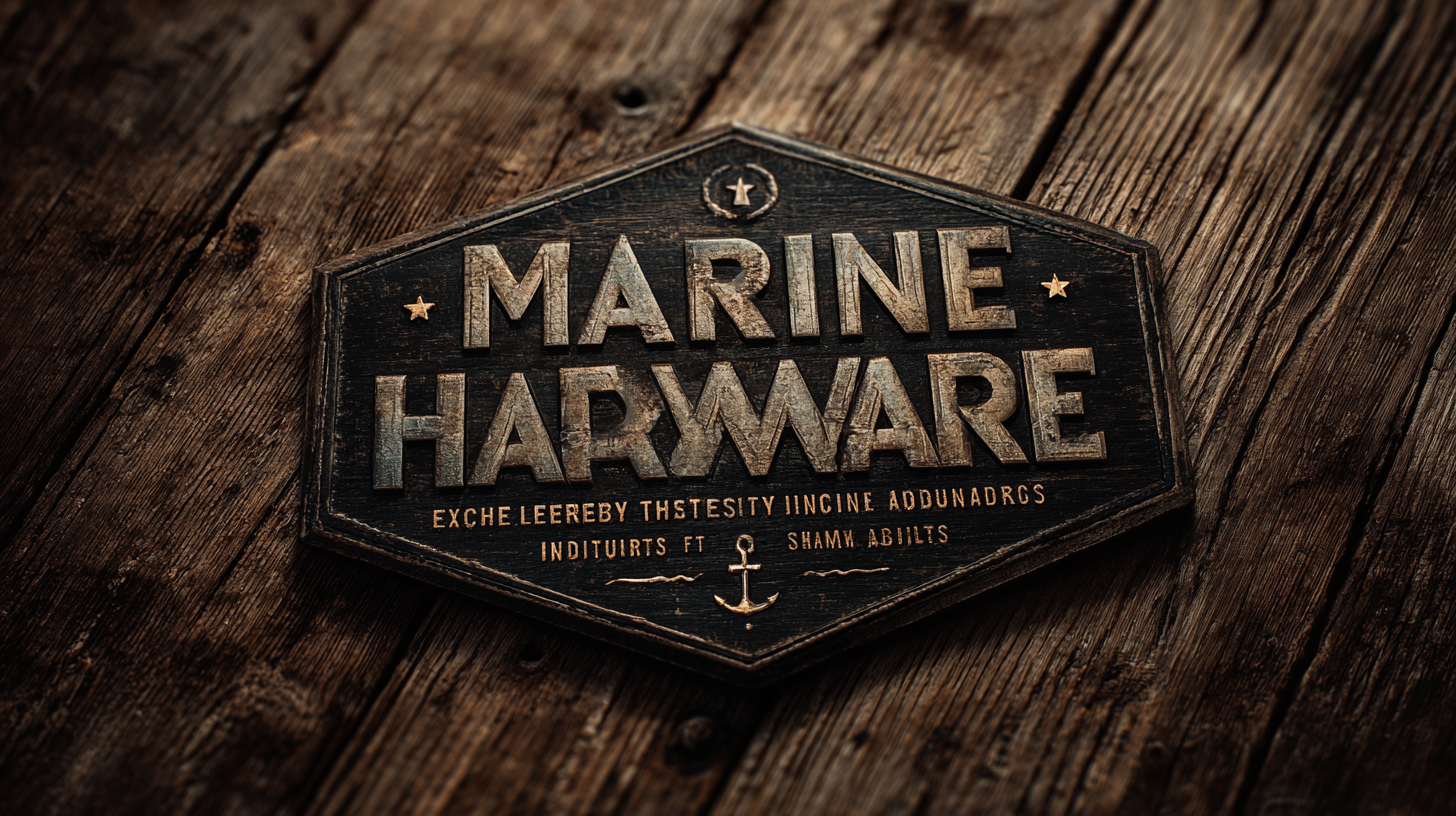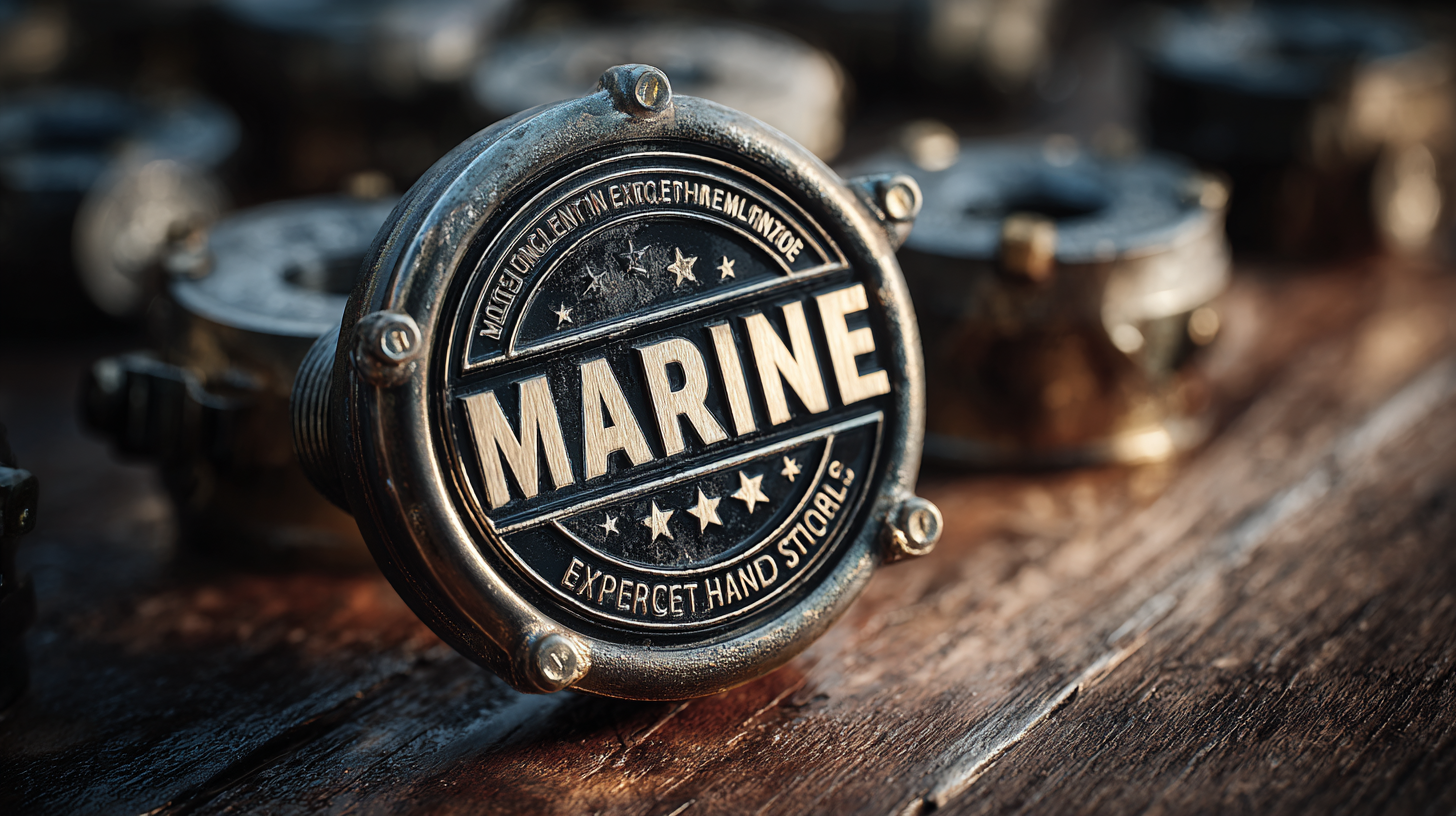
Ensuring Excellence in Best Marine Hardware Through Industry Standards
The marine hardware industry plays a pivotal role in the global maritime sector, contributing significantly to safety and performance at sea. With the increasing demand for high-quality marine hardware, the importance of adhering to industry standards has never been greater. According to a recent market analysis by Grand View Research, the global marine hardware market is expected to reach USD 5.4 billion by 2025, growing at a CAGR of 5.2%. This growth is driven by an upsurge in recreational boating activities and a rising emphasis on safety and quality. Furthermore, stringent import and export certifications across various countries are essential in maintaining product excellence and reliability. By implementing industry standards and leveraging digital technologies, manufacturers can enhance their reputation and ensure top-tier marine hardware that meets the evolving needs of consumers. Such initiatives not only promote safety but also foster innovation in product development.

The Importance of Industry Standards in Marine Hardware Production
The production of marine hardware is crucial for ensuring the safety and efficiency of maritime operations. Industry standards play an essential role in this process, providing guidelines and benchmarks that manufacturers must adhere to. According to a report by the International Marine Organization, adherence to these standards can significantly reduce the risk of equipment failure, which is a leading cause of accidents at sea. For instance, the ISO 9001 standard, which outlines requirements for a quality management system, has been shown to improve product reliability by up to 30% in marine hardware manufacturing.
Moreover, the National Marine Manufacturers Association reported that over 60% of boating accidents are attributed to equipment malfunction. By implementing rigorous industry standards, manufacturers can ensure their products meet the safety and performance expectations of consumers. This commitment not only enhances product integrity but also fosters consumer trust in marine hardware brands. As standards evolve, staying compliant allows companies to remain competitive and innovative, ensuring excellence in their offerings and ultimately contributing to safer waters for everyone.
Current Market Trends in Marine Hardware for 2025
As we look toward 2025, the marine hardware market is poised for significant transformation, driven by both innovation and sustainability. According to a recent report by MarketsandMarkets, the marine hardware market is expected to grow from $12 billion in 2023 to $15.7 billion by 2025, reflecting a compound annual growth rate (CAGR) of 7.2%. This growth is closely aligned with the increasing demand for high-performance materials that enhance the durability and safety of marine applications. Manufacturers are now focusing on lightweight yet robust materials, such as advanced composites and corrosion-resistant alloys, which offer superior performance in harsh marine environments.

In addition to material advancements, the industry is witnessing a shift towards eco-friendly products. A survey by the International Council of Marine Industry Associations revealed that 68% of marine hardware manufacturers are investing in green technologies to meet the rising consumer demand for sustainable solutions. This trend is not only aimed at compliance with evolving regulations but also reflects a broader commitment to environmental stewardship. Brands that prioritize sustainable practices are not only benefiting from increased sales but also cultivating loyalty among a more environmentally-conscious consumer base, setting the stage for a thriving market in the years to come.
Key Players and Innovations Shaping the Future of Marine Hardware
The marine hardware industry is witnessing significant transformations driven by key players and innovative technologies. Industry leaders are not only competing on product quality and durability but also focusing on sustainability and eco-friendliness. Companies are investing in research and development to create materials that can withstand harsh marine environments while minimizing environmental impacts. These innovations include lightweight composites and advanced corrosion-resistant alloys that enhance performance and longevity of marine hardware.
Furthermore, collaborations between established manufacturers and startups are fostering groundbreaking advancements. Startups are introducing smart technology into marine hardware, such as IoT-enabled devices that provide real-time data for performance monitoring and maintenance. This shift not only enhances safety and reliability but also opens new avenues for maintenance strategies, allowing boat owners to anticipate issues before they arise. As the industry continues to evolve, embracing these innovations will be crucial for companies aiming to maintain a competitive edge and ensure excellence in marine hardware.
Ensuring Excellence in Best Marine Hardware Through Industry Standards
| Category | Standard | Key Innovations | Certification Body | Recent Developments |
|---|---|---|---|---|
| Anchors | ISO 13256 | High-strength materials | International Marine Certification Institute | Introduction of corrosion-resistant coatings |
| Rope | ASTM D4632 | Lightweight composite fibers | American Society for Testing and Materials | Adoption of eco-friendly materials |
| Fittings | BS 6349 | Smart technology integration | British Standards Institution | Digital tracking systems for inventory |
| Safety Equipment | ISO 22439 | Advanced inflatable devices | International Organization for Standardization | Enhanced durability and deployment efficiency |
Sustainability Practices in Marine Hardware Manufacturing
The shift towards sustainability in marine hardware manufacturing is increasingly urgent, as environmental challenges pose significant risks to both ecosystems and industry viability. Recent studies indicate that green innovations in marine-related enterprises have the potential to markedly reduce pollution emissions. Executives within the sector are becoming increasingly aware of their environmental impact, with many exploring eco-friendly materials and processes to enhance sustainability. For instance, the use of marine macroalgae as a biofuel source is gaining traction, offering a more environmentally sustainable and economically viable alternative to fossil fuels while reducing greenhouse gas emissions.
Aquaculture, recognized as one of the fastest-growing food production sectors, exemplifies the integration of sustainability practices. A recent UN report highlights that sustainable aquaculture not only addresses food security issues but also promotes nutritional accessibility by increasing seafood availability. The industry's expansion, however, must align with sustainability measures to mitigate climate change effects. Data suggests that implementing responsible aquaculture practices could significantly reduce environmental degradation while bolstering local economies. This dual focus on sustainability and economic growth illustrates a promising path forward for the marine hardware industry, emphasizing the importance of adopting industry standards that prioritize environmental health.
Sustainability Practices in Marine Hardware Manufacturing
This chart illustrates the adoption rates of various sustainability practices used in marine hardware manufacturing. The data emphasizes the importance of industry standards in promoting excellence in marine hardware production.
The Role of Technology in Enhancing Marine Hardware Quality Standards
The marine hardware industry is continuously evolving, and technology plays a crucial role in enhancing the quality standards of marine products. According to a report by Grand View Research, the global marine hardware market is expected to reach USD 8.08 billion by 2025, driven primarily by advancements in manufacturing technology and materials science.
Innovative processes such as computer-aided design (CAD) and 3D printing are revolutionizing how marine hardware is produced, ensuring precision, durability, and cost-effectiveness. These technologies allow manufacturers to create components that meet stringent international standards while optimizing performance.

Moreover, the integration of smart technology in marine hardware ensures reliability and efficiency. For instance, sensors and IoT devices are increasingly being incorporated into marine equipment to monitor conditions and performance in real-time. A report from Allied Market Research indicates that the marine IoT market alone is projected to reach USD 4.89 billion by 2025, highlighting the importance of these technological advancements.
By leveraging data analytics and predictive maintenance, the industry can enhance safety measures and reduce the risk of equipment failures, ultimately leading to higher standards of quality and customer satisfaction in marine hardware.
